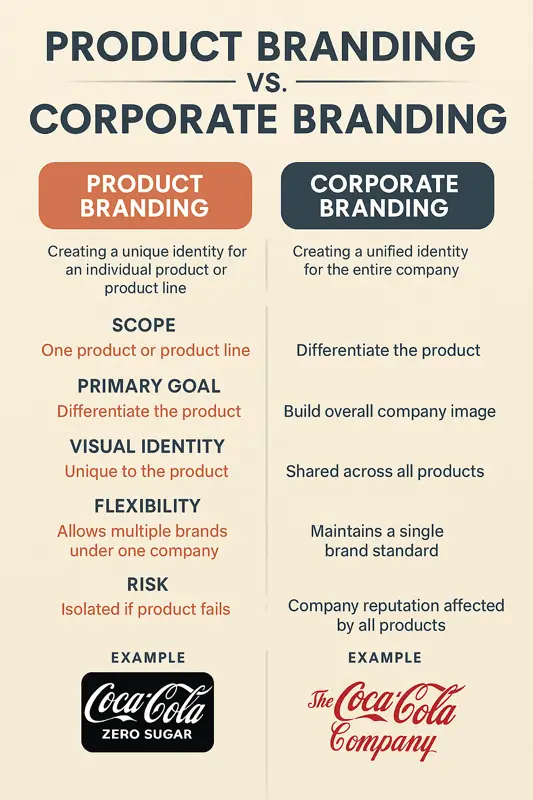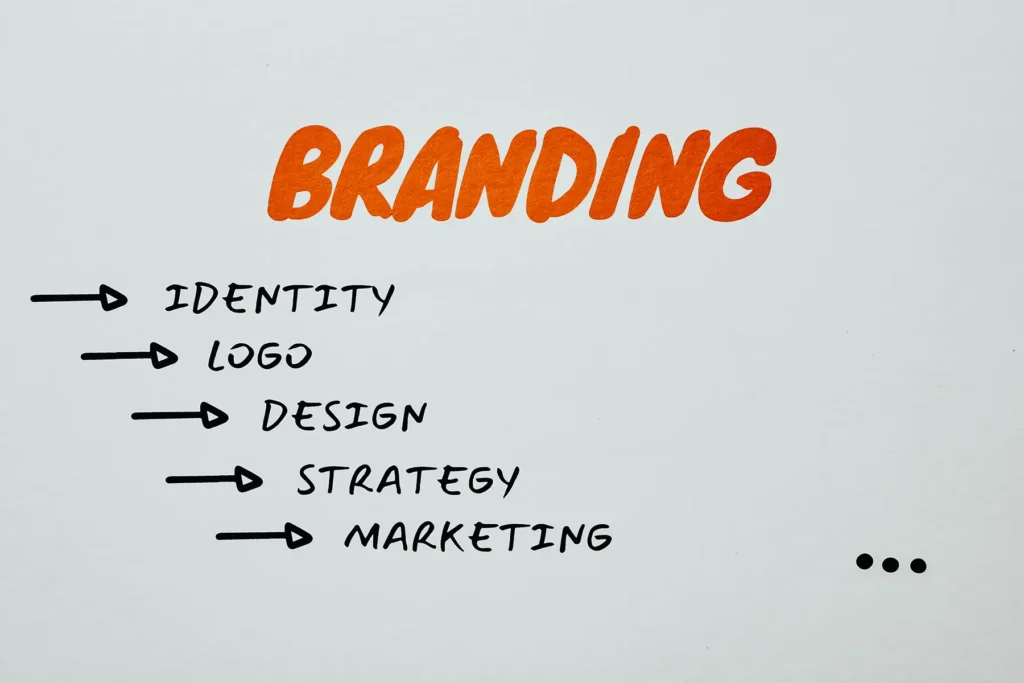Branding shapes how customers perceive your business and your products—but not all branding is the same. The two most common approaches are product branding and corporate branding, and while they share similarities, they serve different purposes.
In this guide, we’ll break down Product Branding vs. Corporate Branding:
- The definition of each
- The key differences between them
- Real-world examples
- How to decide which is right for your situation
Definition: Product Branding
Product branding is the creation of a unique identity for a specific product or product line. This includes its name, design, packaging, messaging, and overall personality. The goal is to make that product stand out in its category, even if it sits alongside other products from the same company.
Example: Nike’s Air Jordan line has its own logo, color schemes, and cultural identity that’s separate from Nike’s overall corporate image.
Definition: Corporate Branding
Corporate branding focuses on the company as a whole rather than individual products. It encompasses the business’s mission, values, visual identity, and overall reputation. All products and services under the company share this brand identity.
Example: Apple uses a consistent brand image across all products—from the MacBook to the iPhone—reinforcing innovation, simplicity, and premium design.
Key Differences at a Glance
| Feature | Product Branding | Corporate Branding |
|---|---|---|
| Scope | One product or product line | Entire company |
| Primary Goal | Differentiate the product | Build overall company image |
| Visual Identity | Unique to the product | Shared across all products |
| Flexibility | Allows multiple brands under one company | Maintains a single brand standard |
| Risk | Isolated if product fails | Company reputation affected by all products |
| Example | Coca-Cola Zero Sugar | Coca-Cola Company |
When to Use Product Branding
You should consider product branding if:
- Your products target different audiences.
- You want to create niche appeal without changing your corporate identity.
- You’re entering a competitive market where standing out is critical.
Scenario: Procter & Gamble owns Tide, Gillette, and Pampers—each with unique branding aimed at different customer needs.
When to Use Corporate Branding
You should focus on corporate branding if:
- Your product lines share the same values and target audience.
- You want customers to trust new products because of your company reputation.
- You operate in a market where consistency and recognition matter more than niche positioning.
Scenario: Virgin Group uses its corporate brand across Virgin Atlantic, Virgin Hotels, and Virgin Money, leveraging its name recognition and adventurous personality.
Hybrid Approach: When to Combine Both
Many companies blend corporate and product branding for maximum impact.
- Example: Microsoft (corporate brand) + Xbox (product brand)
- The corporate name conveys credibility and resources, while the product name creates a unique culture and appeal.
FAQs: Product vs. Corporate Branding
Q1: Can a company switch from corporate branding to product branding?
Yes, but it requires a clear strategy to avoid customer confusion and dilution of the corporate identity.
Q2: Which type of branding is better for startups?
Startups often benefit from corporate branding to build recognition, then expand into product branding as they diversify.
 Key Takeaways
Key Takeaways
- Product branding = identity for a single product or product line.
- Corporate branding = identity for the entire company.
- The choice depends on your audience, goals, and product portfolio.
- A hybrid approach can combine the trust of a corporate brand with the niche appeal of a product brand.


